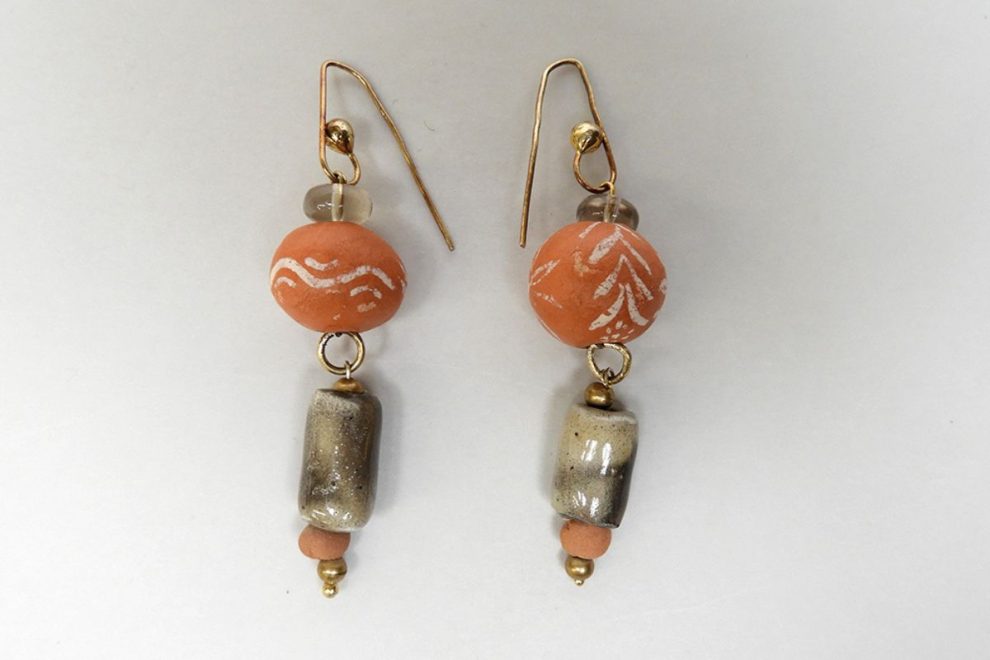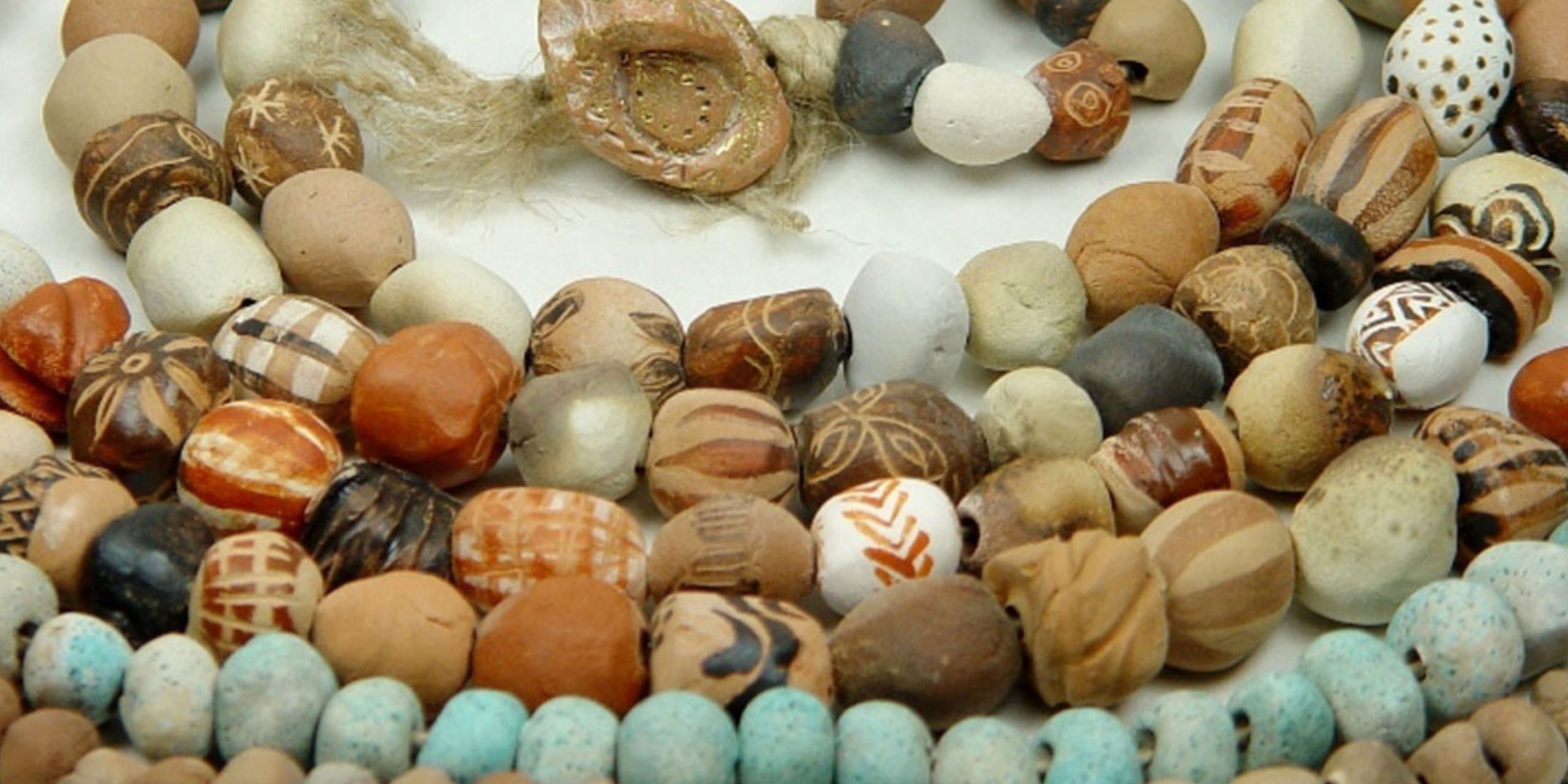
Key Highlights
- Ancient Greek jewelry served as a reflection of social standing, cultural ideals, and religious beliefs.
- From simple designs to intricate masterpieces, the evolution of Greek jewelry spanned centuries, showcasing remarkable craftsmanship.
- Gold emerged as the preferred metal, often adorned with precious stones like emeralds, pearls, and garnets.
- The influence of powerful figures like Alexander the Great significantly impacted jewelry designs and access to materials.
- The legacy of Ancient Greek jewelry continues to inspire modern artisans, with museums around the world housing exquisite collections.
They were not just beautiful items; pieces of jewelry showed us much about their society and culture. They also revealed the rich history of jewelry in this fascinating time. In Ancient Greek society, jewelry was vital. It was part of life for both the wealthy and regular people.
Jewelry as a Concept in Ancient Times
Jewelry as an expression of embellishment has existed since ancient times around the world. A piece of jewelry consists of small decorative items worn for personal adornments, such as brooches, rings, necklaces, earrings, pendants, bracelets, and cufflinks. The Greek word for jewelry is “kosmima” and derives from the verb “kosmo” which in Greek means to adorn. From prehistoric times, man was moved by the goods of nature that surrounded him and chose some of them to create jewelry. Such pieces were necklaces and rings from shells, beautiful sea stones, bones, etc. There was an impression in these early years that ornaments are a means of power, imposition, and appreciation by others. The ancient Greeks began making jewelry with gold and precious stones around 1400 BC. and within a few centuries, they became experts in creating majestic gold jewelry with stones such as amethyst, pearl, and emerald. Initially, Greek jewelry was simpler than in other cultures, with a simple design and construction. However, as time went on the jewelry began to become more complex and the findings show a wide variety of designs and patterns.
The Significance of Jewelry in Ancient Greek Society
In Ancient Greek society, jewelry was more than just beautiful items. It played a big role in their lives. These pieces of jewelry showed their social class, religious beliefs, and cultural values. We see how important jewelry was at daily events and ceremonies. From the shiny items worn by the rich to the simple amulets picked by everyday people, each piece had a story to tell. These pieces of jewelry symbolized power and reflected their beliefs and art.
Women in ancient Greece wore jewelry only for public appearances or special occasions. They often showed their wealth and social status. In ancient Greece, jewelry was not only the privilege of the rich and was worn by much of the population. With the jewelry, the ancient Greeks aspired to protect themselves from the “evil eye” or to be fed with supernatural powers, while sometimes the jewelry they wore had a religious symbolism. Some very beautiful jewels that have been found were dedicated to the 12 gods of Olympus.
Necklaces, earrings, pendants, brooches, bracelets, armbands, belts, rings, wreaths, and other ornate hair ornaments have been found. Floral and animal motifs prevailed and very often the theme was inspired by the 12 gods. Earrings with the winged Mercury, brooches with Aphrodite and her son, Eros, and the eagle of Zeus were very popular designs in ancient Greece.
Symbolism and Status
The Ancient Greeks were really good at adding deep meanings to their jewelry. They turned pieces of jewelry into strong statements. Each gemstone, symbol, and design had a purpose. It showed the beliefs, hopes, and social status of the person wearing it. For example, images of Aphrodite, the goddess of love, showed an appreciation for beauty and desire. Animal motifs, like dolphins and bulls, represented strength, power, or a link to the divine. The type and amount of jewelry someone wore also showed their social status in Ancient Greek society. Wealthy citizens wore fancy pieces made from gold and precious stones to highlight their high position. The fancier the design and the richer the materials, the bigger the sign of wealth and respect. On the other hand, people in lower social classes often had simpler pieces. These were usually made from less precious metals or had charms thought to bring protection or good luck.
Religious and Cultural Influences
Religion was very important in Ancient Greek life, and their jewelry showed this strong belief. They often designed pieces with images of gods and goddesses like Zeus, Hera, and Athena. This served as a reminder of the gods’ influence. The jewelry was not just for decoration; people believed it could bring them good luck and protection from the deities. Cultural ideas also greatly impacted Ancient Greek jewelry. For instance, they valued physical strength and athletic skills, which was shown in symbols like the Herakles knot. This knot stood for power and bravery. The mix of religious and cultural influences in their jewelry showed how important it was. It acted as a visual sign of their beliefs and values.
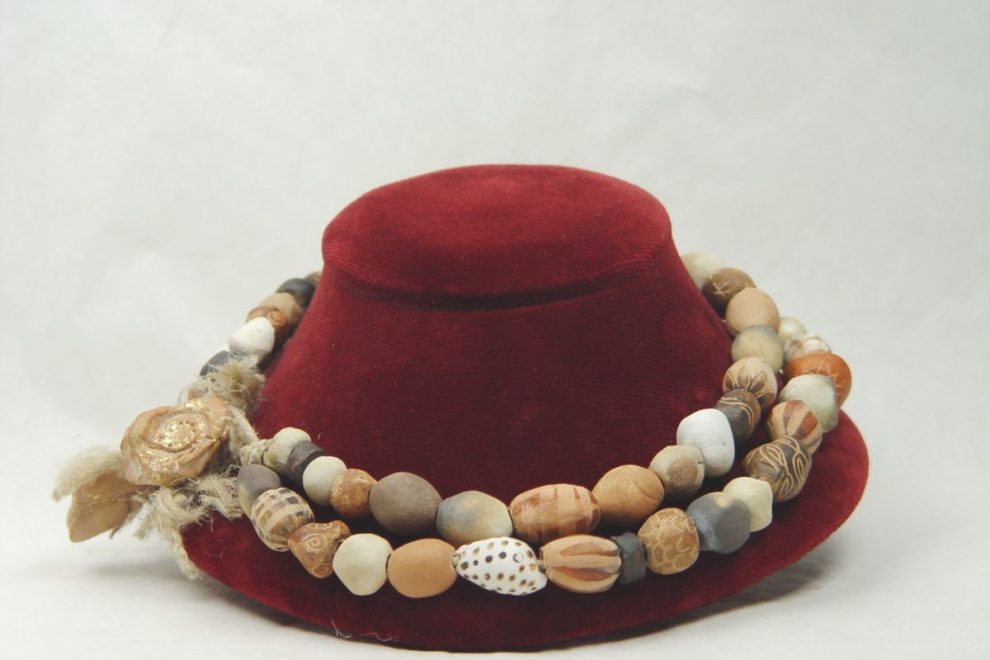
The Evolution of Ancient Greek Jewelry Design
The art of ancient Greek jewelry developed over many years. Each time period added its own unique touch to the designs. Early pieces were simple, while later designs became very detailed and beautiful. The skill and creativity of ancient Greek jewelers grew in amazing ways. As new materials came into use and different cultures mixed together, ancient Greek jewelry designs became more advanced and impressive.
From Simple to Sophisticated
In the beginning, ancient Greek jewelry was simple and elegant. The designs mostly featured geometric patterns, spirals, and basic shapes. These pieces showed a strong sense of balance and form. They held a kind of beauty that was timeless and matched the style of that time. As the Greeks grew, their jewelry became more complex. They were influenced by nearby cultures like the Persians and Egyptians, who brought new skills and ideas. New techniques such as filigree, granulation, and enameling helped create amazing and stunning designs. This change from simple to more detailed jewelry reflected the ancient Greeks’ strong desire for artistic quality. Their ability to mix in fresh ideas made their designs special and unique.
Key Materials and Techniques
Ancient Greek jewelry exemplified exquisite craftsmanship, incorporating various materials and techniques. Gold jewelry was prevalent, symbolizing social status and power. Intricate designs often featured animal motifs, spirals, and rosettes. Gemstones like sapphires, emeralds, and amethyst were prized for their beauty and symbolism. Techniques such as filigree work and granulation were meticulously executed, showcasing the artisans’ skill. Necklaces, earrings, bracelets, and brooches were adorned with these precious materials, reflecting the wearer’s wealth and taste. The art of jewelry-making in ancient Greece included elaborate knot patterns like the Herakles knot, influenced by Greek mythology. This attention to detail and design set ancient Greek jewelry apart, making it a lasting symbol of sophistication and artistry.
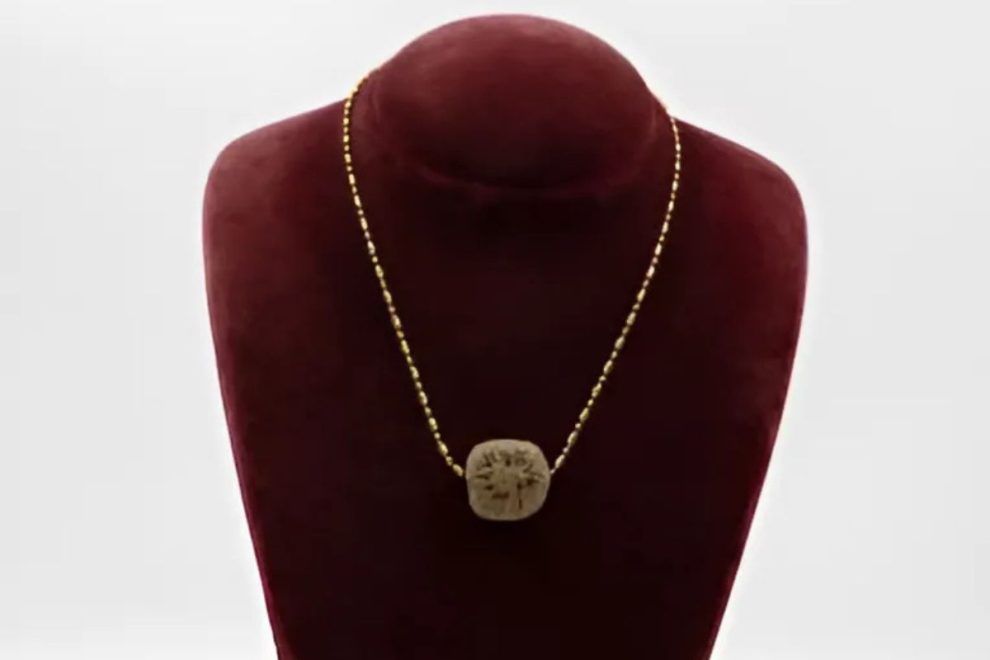
The Journey of Jewelry in Ancient Greece
The tale of Ancient Greek jewelry is best understood when we look at its long history. We can follow its path through different times, each with its own artistic styles and influences. Starting from the early Cycladic and Minoan civilizations, we see how each period, including the later Hellenistic and Roman times, shaped Ancient Greek jewelry.
Let’s take an exciting journey through these periods. We will discover how this beautiful art form evolved and thrived over the years.
Cycladic & Minoan Periods
Many of the artistic skills possessed by the ancient Greeks or Mycenaeans (1600-1100 BC) were inherited by craftsmen of the Minoan civilization that preceded Mycenae for several hundred years and the Cycladic culture developed by people who inhabited this place of the Aegean from 4000 BC. The Minoans lived on the Mediterranean islands of Crete and Thera (Santorini) and in Anatolia (Turkey) from 3000 BC. and 1600 BC. (Early Bronze Age). In the ruins of the Cycladic and Minoan cities of Crete, archaeologists have found bronze talents as evidence of advanced melting techniques. These early metallurgical skills were used to create intricate jewelry, such as the golden “Minoan Bee Pendant” from the tomb at Malia, now found at the Heraklion Archaeological Museum. Although the Etruscans were generally credited with inventing the technique of metallurgy known as granulation, this method appears in the jewelry of the Late Minoan period, which dates back many centuries to Etruscans. The Minoan civilization ended abruptly, probably due to the catastrophic volcanic eruption of the volcano of Thera, around 1600 BC. The eruption of the volcano of Thera sent two-thirds of the island into the stratosphere, causing large earthquakes and 110 feet and 490 tsunami feet across the Mediterranean. This may have been the inspiration for the lost city of Atlantis, written in about one of Plato’s dialogues entitled Timaeus and Critias, written from 360 BC.
Mycenean Period
The wealth and power of the Mycenaean civilization were well documented in the epic Iliad of Homer, where King Agamemnon led the Greek army against Troy. It speaks of a solid gold mask known as the “Mask of Agamemnon” at Agamemnon’s funeral and was found in the pit tombs of Mycenae by a German treasure hunter, Henry Schliemann, in 1876. During the Mycenaean civilization 1600 – 1100 BC, metallurgy (copper, silver, tin, gold) flourished in the cities-states of Mainland Greece, and the art of Goldsmithing and the processing of semi-precious stones flourished. Many tomb excavations reveal utensils of everyday life made of copper and silver, textbooks and swords with intricately decorated, but mainly a variety of gold jewelry, such as those found in the royal tombs of burial circles A and B of the Acropolis of Mycenae. Most of these jewels are forged with embossed decoration, elaborately worked in gold foil, such as the golden royal masks of the early Mycenaean period, but often combine other materials such as silver, copper, enamel, and semi-precious stones.
The Mycenaean jewels worn by both the kings and the ruling class were symbols of power, made with a variety of techniques and rich themes. Diadems and bracelets are made of thin gold leaf, with a printed decoration of spiral motifs and multi-leafed rosettes. Gold, silver, or bronze pegs for the chest, with spherical heads made of mountain, crystal, or ivory. Heavy belts made of one-piece gold foil with printed geometric decoration – often with additional silver elements – gold pins to hold women’s hair. The Mycenaean necklaces, from the middle of 1500 BC are processed with cut gold plates in a variety of animal and plant designs such as lily of the valley, clams, octopuses, while the theme is enriched by the schematic innovation of the biologically shaped bead. Among these gold elements of the necklaces, the Mycenaean goldsmiths placed beads of agate, amethyst, jasper, and cyan matched in various shapes or even simple glass mass made of beads on stone matrices.
Geometric Period
After the end of the Mycenaean world, in the dark so-called years (1100- 900 BC), silver and goldsmithing did not have to show the wealth and imagination of previous centuries. Greece and the Eastern Mediterranean are going through a period of raids and racial reorganizations, which form new social groups. From this dark age, known as geometric, few jewels have survived. However, the tradition that had been created will survive, mixed with newer influences from the North, on mainly bronze and iron jewelry, the precious metals of the first centuries are very rare.
Archaic Period
From 800 BC. Greek horizons again widened and new sources of gold from the Crimea and Lydia in Central Asia enriched the valuable raw material. Greek colonies were established from the Black Sea and Central Asia to the Western Mediterranean with the crown of the Greek colonies of Taranto and Syracuse in Sicily and of course, the trade with the Near East and Phoenicia resumed. Thus, it is understandable that the eastern influences delimit the Greek theme of goldsmiths by offering new elements. Mythical figures, sphinxes, exotic monsters, winged horses, plants and animals, vultures, and lions adorn Greek jewelry, with forged and embossed techniques, on the matrices. At the same time, large and impressive jewelry make their appearance with the new technique of wire drawing and with an individual decoration of enamel. In 700 BC. For the first time, human figures and narrative mythological scenes appear in jewelry in sculpted printed three-dimensional form, with special brass chisels. Archaic Greek societies of 600 BC. on the eve of the Persian Wars, used jewelry both as a symbol of economic success and as valuable marketable items, but in parallel with the new philosophical and aesthetic ideals announced the “Golden Age” of classical times.
During the archaic period 600- 475 BC. while metallurgy is showing great development and prosperity, the goldsmith sector in Greece has to show few samples. This lack of gold jewelry can probably be explained by the Persian Wars, and the fact that the Persians at that time had control of the Middle East, and therefore the available quantities of gold. However, during all this period the continuity of jewelry is not interrupted, as Greek jewelers now offer their art outside Greece, in the foreign market, creating Greek-Scythian, Greek-Thracian, Greek-Etruscan, Greek-Celtic jewelry, so with the end of the Persian Wars, the Greek jewelry industry continued, as if there was no interruption, its exceptional works with some important changes in technique.
Early Mycenaean era Greek jewelry consisted of simple beads carved into the shell or animal figures. The Greeks began to use gold and semi-precious stones in their jewelry around 1400 BC. (Late Bronze Age). Ivory, which was spread by the Minoans, was also common during this period. A popular Greek design motif was the Gordian knot of Hercules, also known as the “knot of Hercules” or “wedding knot”, which was influenced by the ancient Egyptians and later adopted by the Romans. It depicts two ropes tied together that were used as a symbol of marriage (“knot connection”), or as a protective amulet to ward off evil. Greek necklaces were made of leash – a chain with fruit or calyxes or a chain around a pinned animal head or a dolphin clasp. The necklaces often have amphorae, all connected by a chain suspended from a series of smaller chains. Gold wreaths are worn as hats decorated with acorns, flowers, and laurel leaves, adorned with elements of Love and Victory. The laurel was the sacred plant of Apollo, the god of intellect and light, and the laurel wreath was used as a crown of honor for the heroes and scholars.
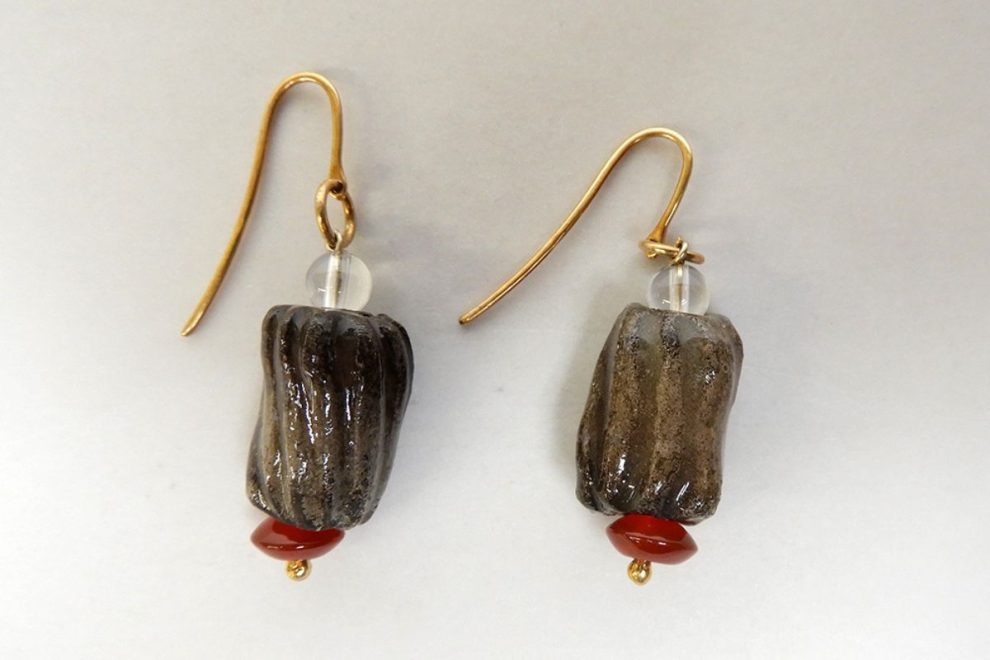
Classical Period
The victorious wars between 490- 470 BC. brought a lot of gold to Greece and goldsmithing flourished again. In the classical years 475-330 BC. the preference turns more to the wire technique instead of the granulator and the enamel, which was previously used by the Mycenaean goldsmith, reappears, but in combination with the wire mesh now. Classic jewelry has a well-studied wire and granular decoration in the form of people, but also animals and flowers, on bracelets. From the tombs of Eretria come wonderful specimens, masterpieces of this silver and gold period. Great emphasis is placed on earrings, which are intricate with small delicate floral and anthropomorphic elements (love and deities). The same goes for necklaces. At the same time, significant modernity makes its appearance in the morphology of classical jewelry, the bracelets become cylindrical, like large hollow rings, with ends from the heads of animals. The snake shape is also used for the first time on bracelets and rings.
Hellenistic Period
The new era that emerges through the long and destructive Peloponnesian War for the city-states of Greece, is a period of significant prosperity and growing brilliance and power for the royal court of Macedonia. The great changes that mark the Hellenistic period 330-27 BC. and due to the conquests of Alexander the Great and the contacts with the East and Egypt, it is not possible to leave unaffected the jewelry. It is not only the abundance that surprises but also the creation of new types of jewelry, as well as decorative themes. The polychromy achieved by the use of semi-precious and sometimes precious stones such as amethyst, garnet is now being established. The findings of the royal Macedonian jewels from the tombs of Vergina revealed the highest level of knowledge of the technique of goldsmiths. Particular emphasis is placed on alloys that mimic gold, such as the famous krater of Derveni, where the intense yellow color comes from the high content of copper. From the ancient texts, we are informed that during the classical times the golden areas were Thassos, Sifnos, and Cyprus.
Roman Empire
The conquest of Greece by the Romans at the end of 100 BC. does not delimit the end of the glorious Greek civilization, since it is known that the Romans adopted the Greek philosophy, arts, and letters, leaving the spiritual autonomy to the occupied possessions. The goldsmithing of the Roman Empire continues the Hellenistic tradition with a gradual simplification in form. The wire technique and granulation are receding in the face of the growing preference for precious and semi-precious stones, while pearls are also appearing as individual decorative elements. In Roman times, the evolution of seal engraving was impressive, while for the first time, jewelry appeared, which consists of a small central element hung from a complex and thick chain. This pendant consists of a gold coin, which bore a bust of the Roman emperors. At the same time, a new technique is used, the perforated technique, which consists of the removal of parts of the jewelry knot, with special cutting chisels, thus creating azure light and shadow. All these trends lead to the silver and goldsmithing of the early Christian and Byzantine times.
Byzantine Empire
The Byzantine jewelry of 400-500 AD remained purely decorative and with increasing morphological austerity. This austerity was partly due to the financial difficulties of the Roman Empire, which due to barbaric invasions and constant wars, was unable to supply the market with gold and precious stones. With the occupation of Constantinople by the Frankish crusaders in 1204 AD, most of the queen’s works of art and silver and gold were destroyed, while others made their way to the West and today adorn the museums and cathedrals of many European cities such as St. Mark of Venice. The Komnemian period, when Byzantine civilization flourished, was followed by Palaiologos, i.e. the later years of Byzantine civilization, which was lost with the fall of Constantinople in 1453 AD.
Modern Greek Period
Having as its main axis the closest memories of Byzantine civilization, the modern Greek silver, and goldsmithing, continues an even older atavistic tradition, assimilates and reshapes an aesthetic based not only on endogenous elements but also on elements borrowed from both the West and Eastern Islam. Modern Greek jewelry, during the difficult years of Ottoman rule, is characterized by a source of inspiration and originality, but mainly by the passion of the anonymous artist “Chrysikos” to patiently create something special and unique, even with the cheap materials available, due to of the general poverty of the conquered Greeks. Thus, he mainly uses bronze and silver, mixed in large quantities with copper, to which they add arsenic to get a little shine, while at the same time when the conditions allowed, they gilded them. Depending on the way they are made, modern Greek jewelry is divided into forged, perforated, cast and wire, while the savati, a kind of black enamel, and colored glass stones often complement the decoration. Diadems with many small elements or coins hanging on the forehead, chest jewelry with chains and crosses adorned the chests of women. Furthermore, heavy buckles, with forged intricate floral decoration, with bracelets up to the elbows. However, the belt has a primary role and a symbolic character, while at the same time serving as a distinctive point of social order and office.
Jewelry in Ancient Greece served more than just decoration. It showed people’s social, religious, and cultural identity. During the simple Cycladic period, jewelry was quite different from the luxurious designs of the Hellenistic era. Jewelry making changed a lot, showing both skill and deep meaning. Ancient Greek artisans used many materials and techniques to highlight their creativity. Learning about how Greek jewelry evolved helps us understand the rich history and beauty of that time. Each piece of jewelry tells a story about its era, explaining status and beliefs, as well as skills in art. Looking into ancient Greek jewelry gives us a peek at the artistic work and values of a civilization that loved beauty and symbols.
Discover the allure of ancient Greek jewelry designs and find inspiration for your modern collection.
In our “Exclusive Collection” you will find one-of-a-kind jewelry pieces that are inspired by Ancient Greece. Scroll through our products and discover all our sophisticated yet eccentric jewelry that is ideal for unique gifts.

